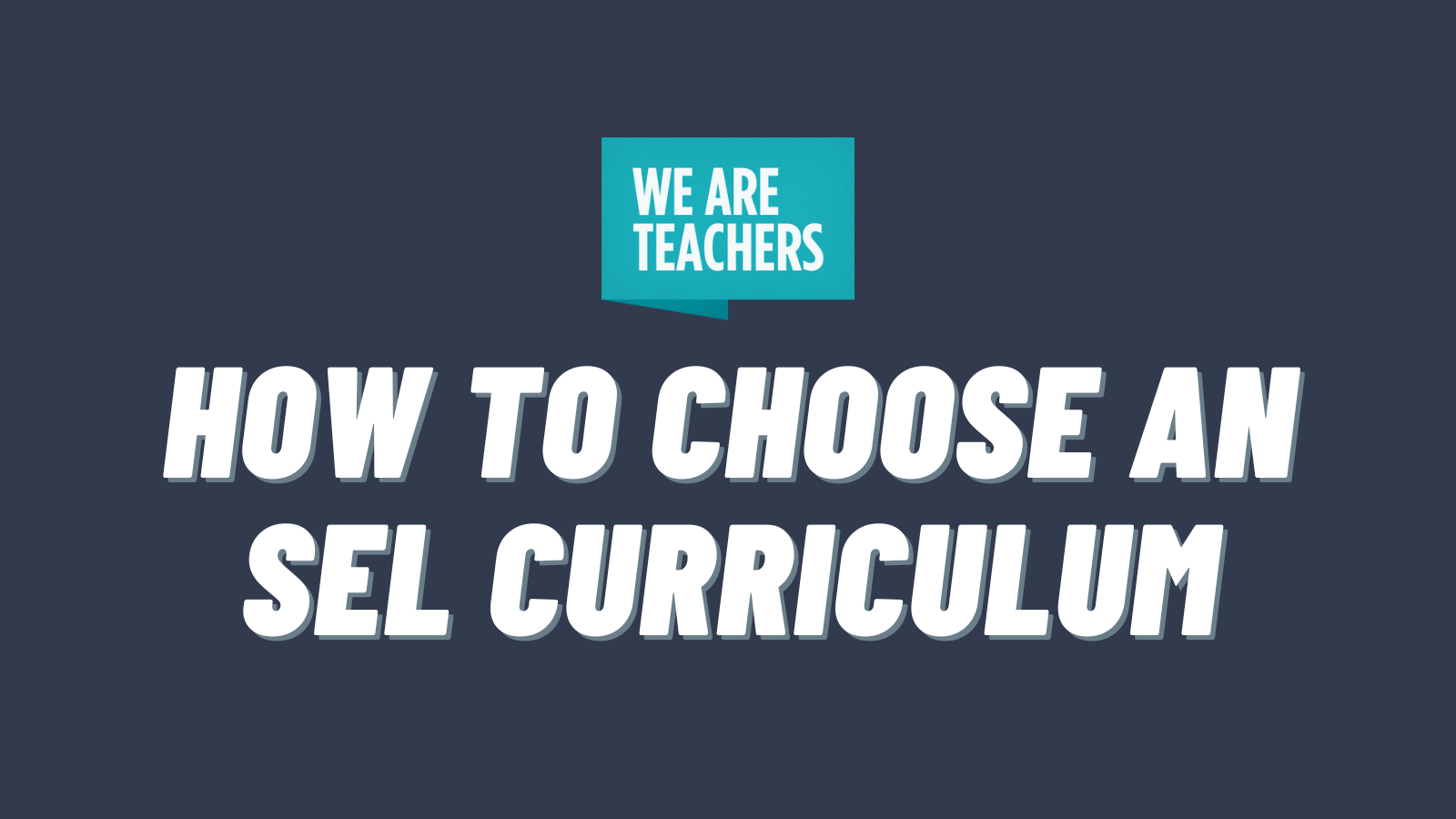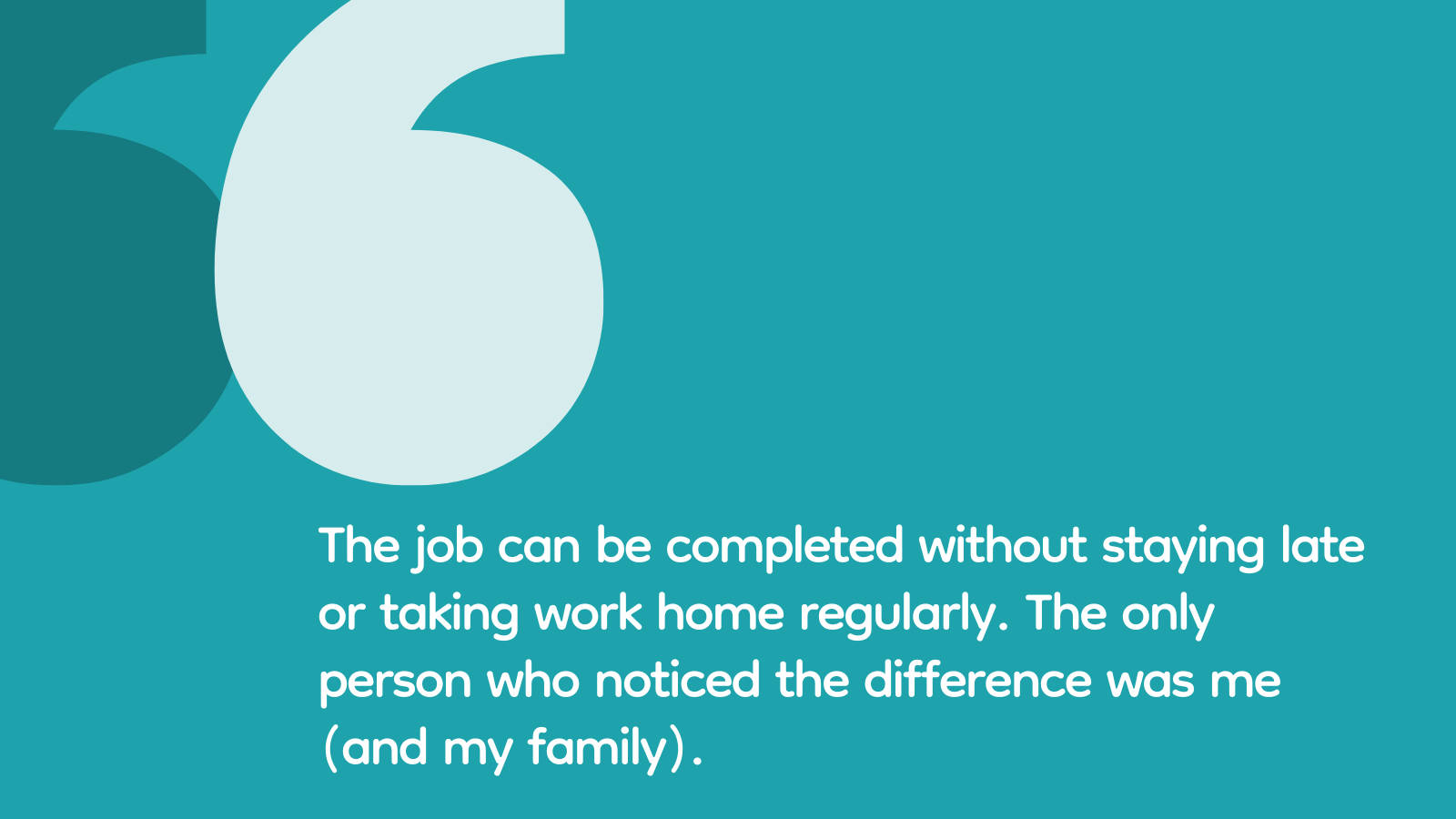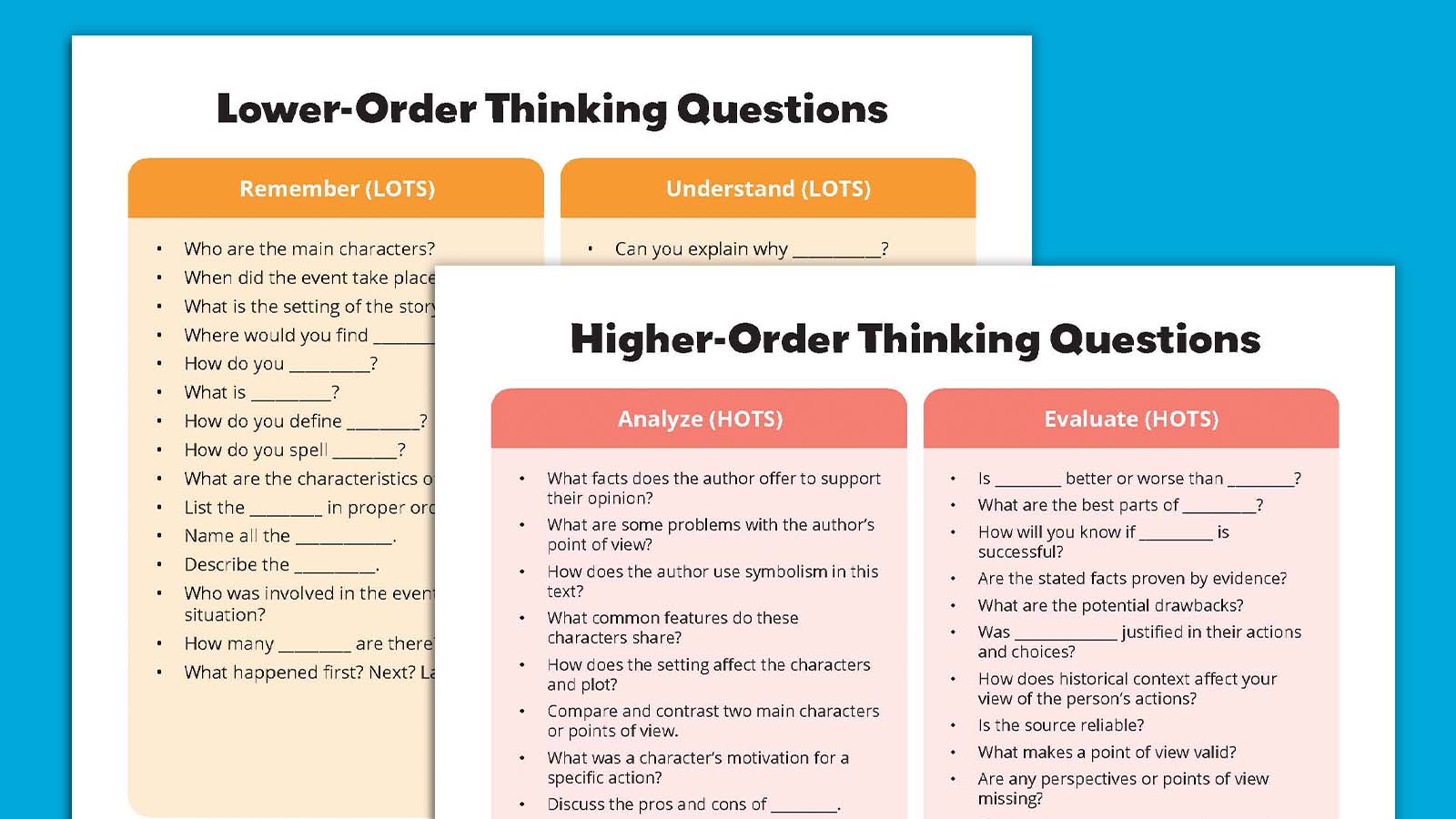To say that education has been a roller coaster lately is putting it mildly. Even in just the past five years, the educational landscape is barely recognizable. The pandemic flipped our classrooms upside down, thrusting teachers into the virtual world and then back to in-person, creating a whole new dynamic in how we teach and connect with students. The way we use technology has evolved, and attendance patterns have definitely changed.
To save public education, teachers need more than just our gratitude. They need robust support systems and serious changes in policy. Let’s take a look at how we got here—and how we can get out.
Is education getting better or worse?
When we asked teachers in our We Are Teachers Helpline group on Facebook if education has gotten better, worse, or stayed the same in the last five years, the response was clear: It’s worse. Much worse. Here’s some of what they said:
“When I started teaching 7th grade 13 years ago, I could give much more rigorous tasks, kid would read directions, write their full names on things, etc. Today, I feel like I am teaching a much lower grade level.” —Beth
“I feel that ‘education’ has improved. However, what’s holding things back are things beyond an educator’s control. Being called groomers/indoctrinators by society. Parents screaming for book bans on stuff they clearly haven’t read. No discipline at home. Devices. State testing.” —Maria
“Attendance is worse. I had 200 total absences during a two-week period of time this year.” —Lisa
Teachers across the nation feel similarly
The We Are Teachers community seems to reflect what teachers are feeling on a larger scale. A recent survey from the Pew Research Center found:
- 82% of teachers said that “the state of public K-12 education has gotten worse in the past five years.”
- Only 5% said it had gotten better.
- 53% of teachers surveyed by Pew said they expected education to be worse in five years. 20% of teachers said they thought it would be better.
The things that Pew teachers said had made education worse in the last five years:
- The political climate (60%)
- Effects from the COVID pandemic (57%)
- Funding and resources (46%)
We know education can get better, and it’s not all on teachers. So, here are the things that make teachers pessimistic about education and what we can do to change them.
1. Better funding for education
Let’s start with the most obvious one. After all, when we spend more on education, teachers and students have better outcomes.
Education systems are not fully funded, and this has a disproportionate impact on students in low-income communities. There is a huge difference in per-pupil spending across states, ranging from $5,700 to $17,000.
Solution: Money
Put money where it’s needed most. Fund school systems to ensure equity, which means that students in low-income areas will get more funding because it costs more to educate them. And at a minimum, fully fund federal education and special education.
2. Increased support for students’ mental health
According to the Pew Research survey, 58% of teachers said that they have to address behavioral issues daily. Twenty-eight percent said they have to help students with mental health challenges each day, leading to teachers using transition time to try to establish quick check-ins:

We know that mental health impacts students’ ability to function and learn in school, and student mental health concerns are impacting students’ behavior and learning, as well as teachers’ ability to teach.
Solution: Bring therapy into schools
After suffering three student suicides, Stamford Public Schools in Connecticut decided addressing mental health was overdue. After an audit of their mental health programs, the district worked with the Child Health and Development Institute of Connecticut to implement Cognitive-Behavioral Intervention for Trauma in Schools (CBITS). CBITS is a school-based therapy program for students in grades 5 through 12 who have experienced trauma. The district also provided supports for staff and brought in community and state resources for students.
In addition to therapy, taking time for check-ins is important.
3. Help in getting students to school
When kids aren’t in school, they can’t learn and teachers can’t teach. When schools experience chronic absenteeism—when students miss 10% or more of a school year—the “churn” of students coming through school each day impacts how teachers can teach and what all students learn.
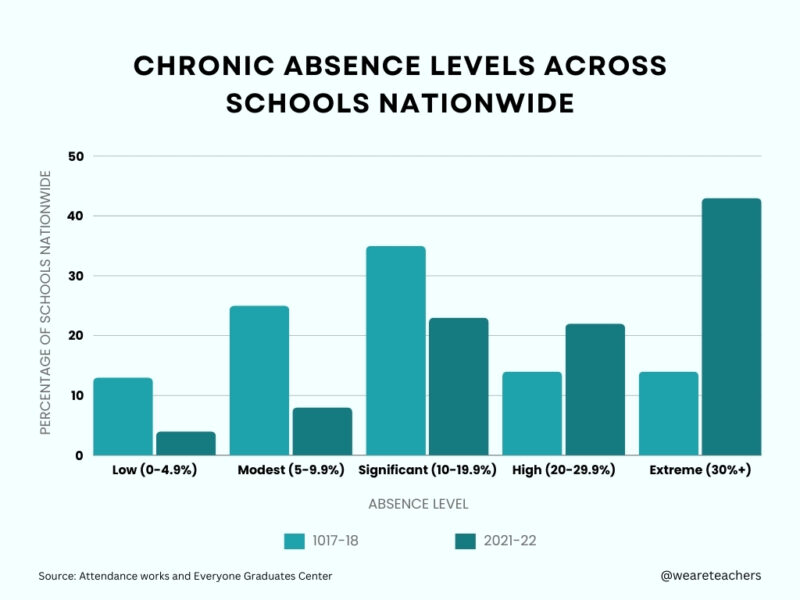
During the pandemic, students got used to not coming to school, and since schools re-opened, chronic absenteeism has been a persistent concern. The good news is that it’s not getting worse. But absenteeism rates are still high. In 2023, chronic absenteeism was at 26%, compared to 15% in chronic absenteeism before the pandemic. Put another way, almost one in four students was chronically absent in 2023.
Solution: Stop doing what doesn’t work
Agua Fria Union High School District in Arizona has already dealt with chronic absenteeism. Prior to 2017-2018, students were suspended for attendance, so the district shifted to thinking about attendance as a problem rather than a behavior. The goal was to make school a place students wanted to be and to help them get there. This could mean working with community organizations to make sure students have alarm clocks, or starting a walking school bus program to help kids get to school.
4. More respect for teachers
The anecdotes of parents ranting at school board meetings and banning books are indicators of an underlying problem. Parents and the public (including legislators) need to respect teachers and their ability to make good decisions for kids in the classroom.
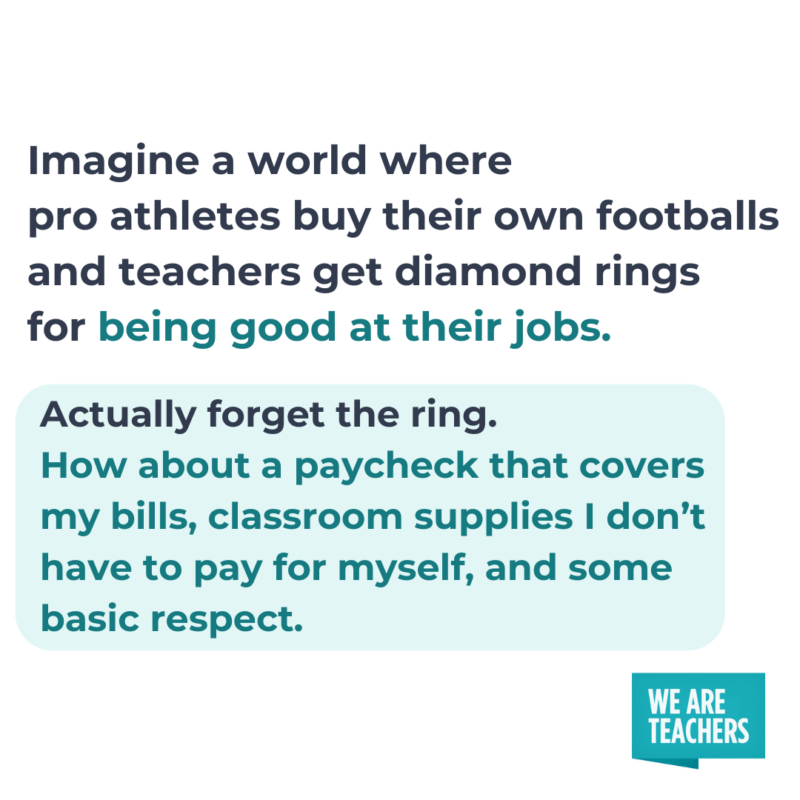
In the Pew Research survey, teachers didn’t feel like they got support from parents for everything from student misbehavior to attendance to helping with schoolwork. And in the We Are Teacher Helpline, teachers mentioned book bans and parents accusing teachers of “grooming” their children.
Solution: Elevate teachers’ voices
Using surveys or strengthening teacher unions can ensure that teachers are actually heard during conversations about education, whether the conversations are small or large.
Read more: 15 Most Powerful Teachers Unions in the United States
Solution: Come together to support education
Some issues, like book bans or parent rants about pedagogy, are not for individual teachers to fight. In that case, schools can partner with larger advocacy organizations like the ACLU to fight book bans. And school leaders can draft and enforce district-level policies that support teachers’ autonomy and decision-making, like Illinois leaders who banned book bans.
Read more: 6 Strategies To Shut Down Book-Banning Complaints
5. Increased teacher pay
This is a topic we’ve written about before and it’s just not getting better, despite the proven benefits of raising teacher pay. Teacher pay needs to reflect the professional qualifications and demands of the job.
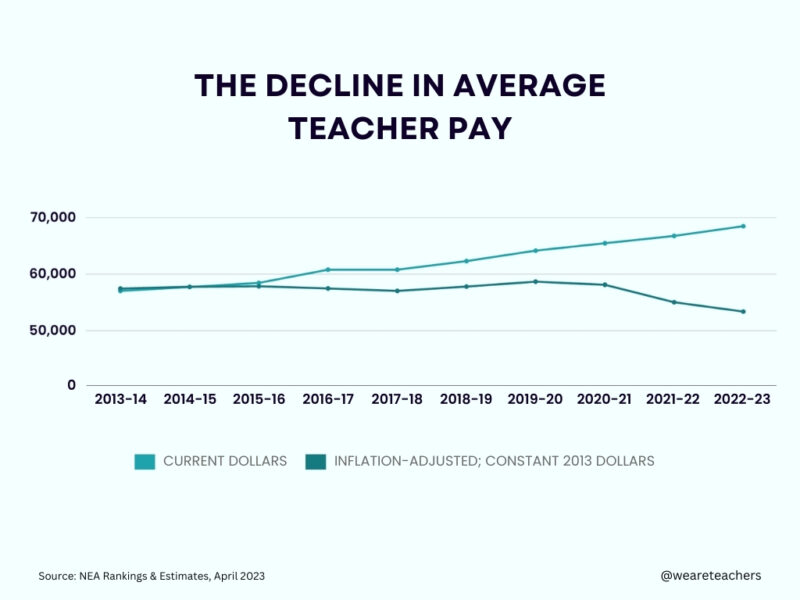
In 2022-2023, teachers made an average of $3,644 less than they did 10 years before. We can’t pay teachers less and expect more.
Solution: Raise teacher salaries
It’s time to increase teacher pay to bring it on par with other jobs that require a master’s degree and a high level of skill. It can be done: In 2022, New Mexico increased teacher salaries by an average of 17%. There are lots of benefits to increasing teacher pay, like keeping good teachers in the classroom and staffing hard-to-staff schools. Fortunately, there are districts that are focused on increasing teacher salaries.
Check out our Teacher Salary Stories series to get a feel for how far current teacher salaries actually go.
6. Stricter cell phone policies
In the Pew Research survey, 33% of teachers indicated that cell phones were a major problem in their classroom. This was a significant problem for high school teachers, where 72% of teachers indicated that cell phones were a big problem.
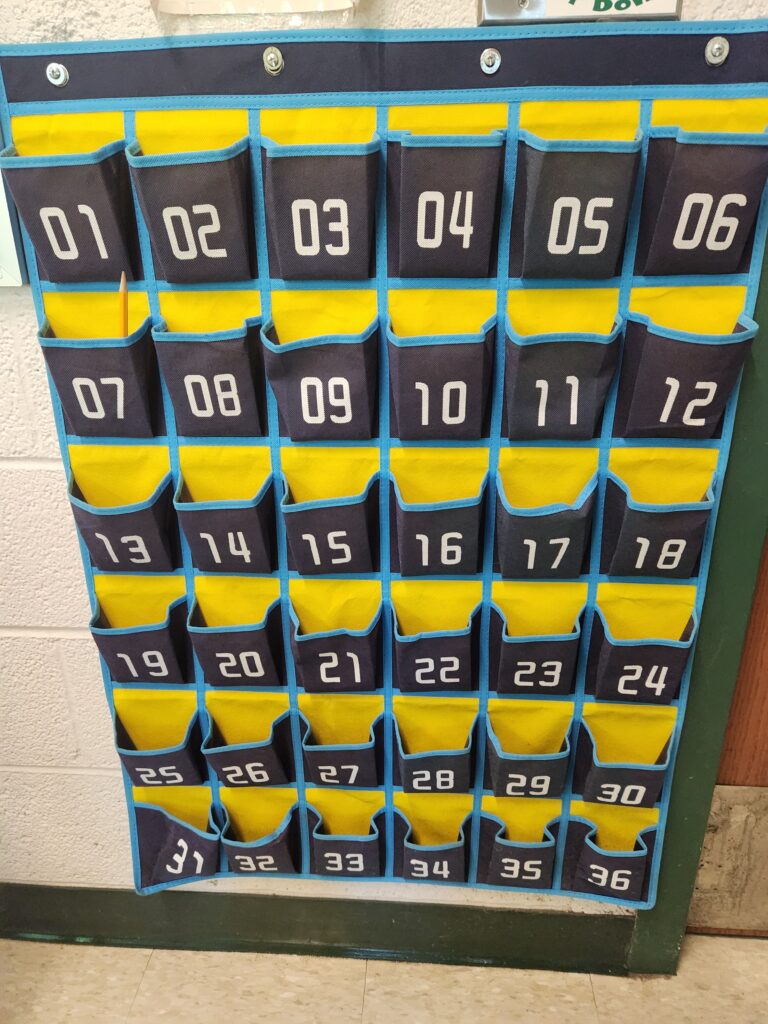
Teachers are noticing that cell phones are wreaking havoc on students’ attention and focus. But the damage from phones goes beyond academic—research shows they’re hurting students physically and emotionally too.
Solution: Cell phone bans
Teachers can tackle cell phones with charging stations and other classroom policies, but that’s not enough. Support teachers at the district or state level with cell phone bans that could reduce the risk of cyberbullying and improve grades for students. Plus, these cell phone guidelines from a youth anxiety expert are designed to keep kids safe outside of school.
7. Improved working conditions
You don’t have to tell teachers that school buildings are insufficient learning environments. Many are even falling apart, and this impacts low-income students the most.
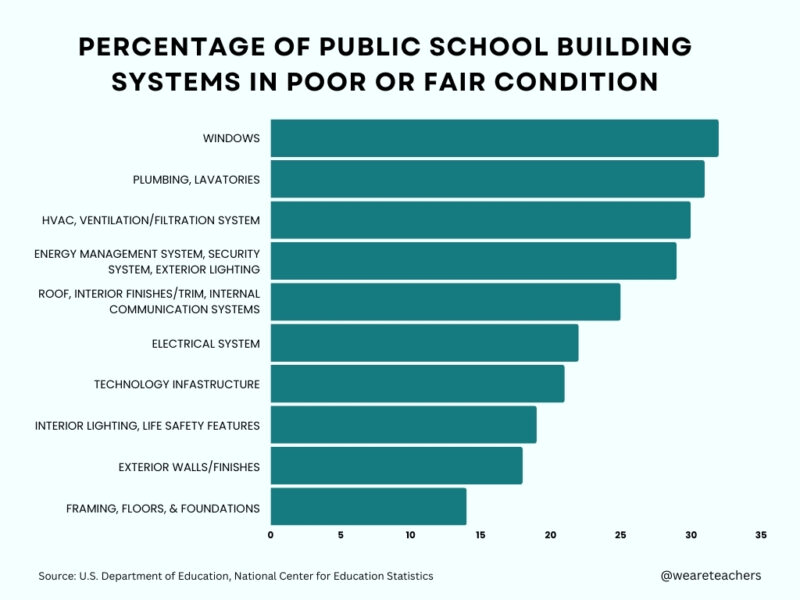
We’ve been writing about it for years and unhealthy school buildings are still a concern. A 2020 Government Accountability Office report found that 54% of the country’s school districts need to repair, update, or replace school building systems (like HVAC, heating, or ventilation). And the American Society of Civil Engineers gave schools a D+ for infrastructure based on the level of maintenance needed. At a minimum, school buildings should be places where kids want to learn and teachers want to teach and should not make anyone sick.
Solution: Invest in school buildings
This is a solution that requires state and local government intervention. In Orange County, Florida, in 2021, more than half of the 202 schools had been renovated. Orange County school officials created and implemented a long-term plan for facilities improvement, and took the opportunity to upgrade and improve conditions for teaching and learning, in addition to making basic renovations. For example, replace HVAC systems with quieter, more efficient ones so the acoustics in schools are improved as well as the heating and cooling.
8. Teacher agency
Teachers just want to teach and see students have that spark when they finally get it or learn something new. Teachers in the Helpline felt like with the constant focus on new initiatives—Common Core, accountability, state testing—they couldn’t just teach. It’s time to get back to basics.
From a reduction in arts education to an increase in class sizes, teaching is changing, and some changes need to be reversed. As Terri wrote in the Helpline, “content is vast, however many teachers do not teach foundational skills. The obsession with data and testing has also negatively impacted teaching. Students have lost the intrinsic love of learning.”
Solution: Let teachers teach
Letting teachers teach means providing smaller class sizes and the freedom to make decisions about how much recess time kids need, how to incorporate art, or how much time kindergartners should spend playing. Teachers know what’s good for kids and their growth, and helping kids find joy in learning is what teachers love to do!


